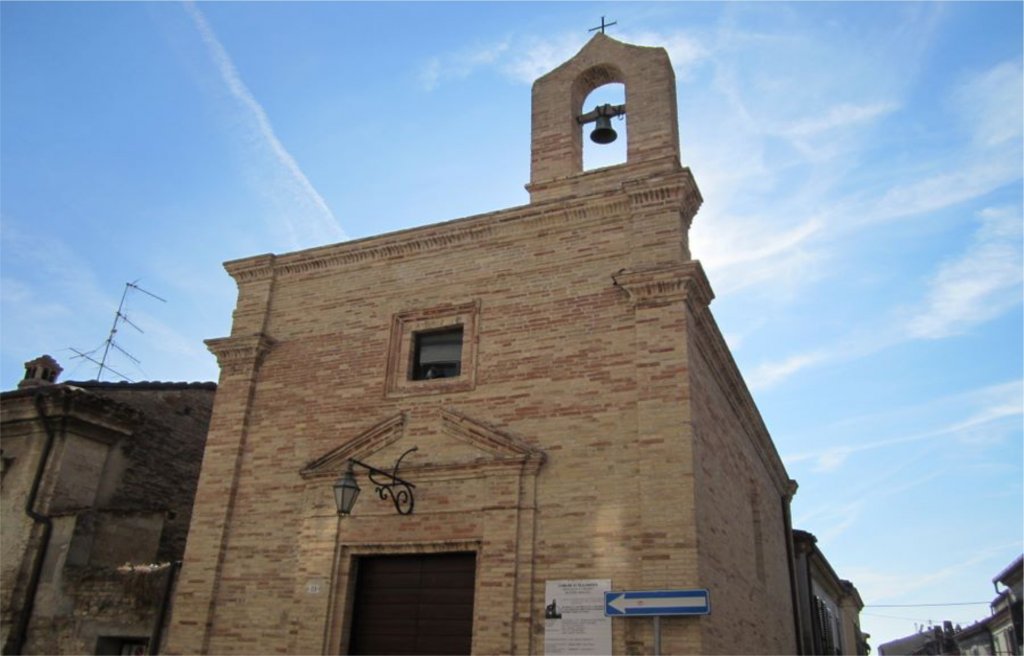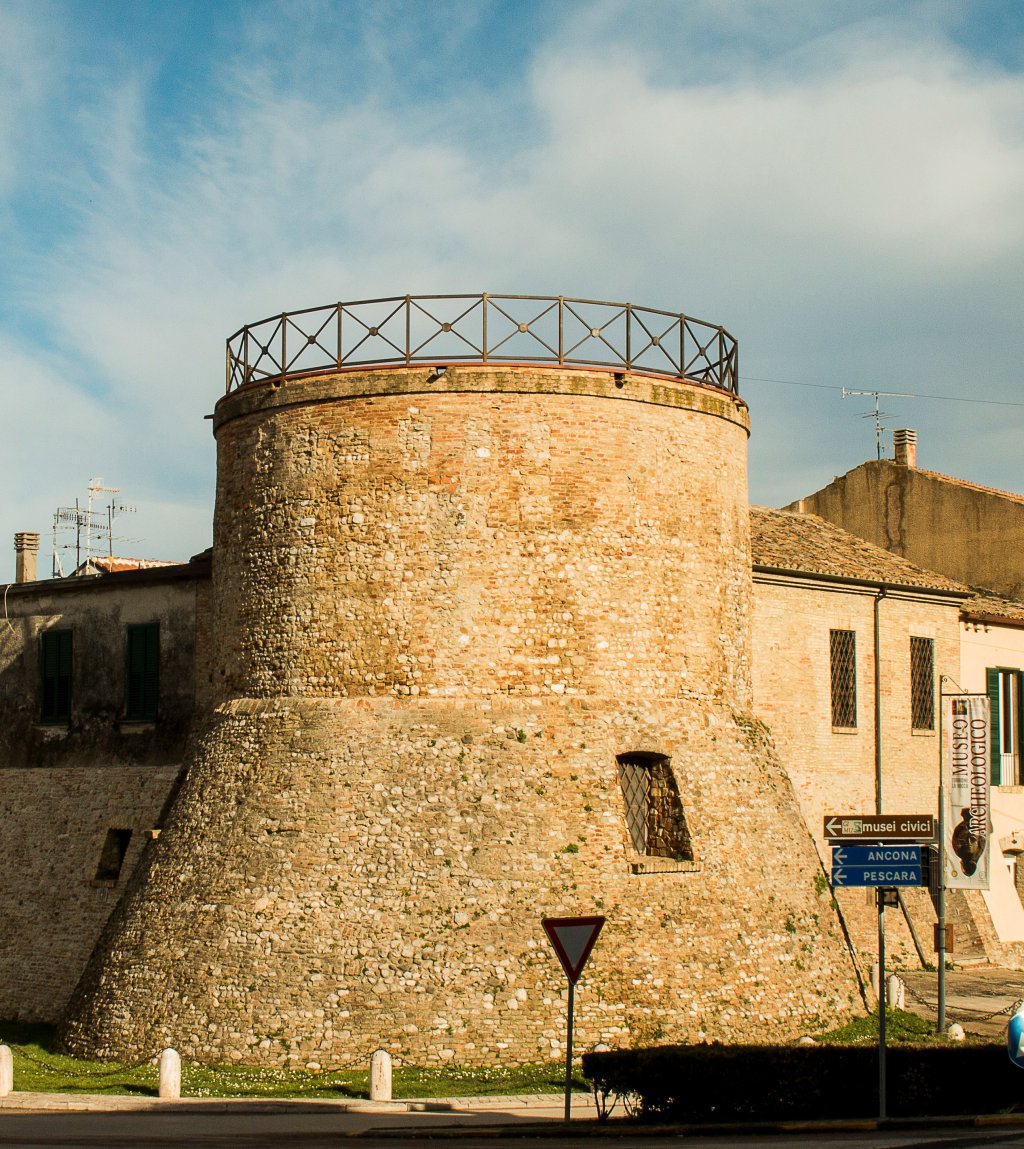- Home
- Punti di interesse
- Contrada della Rocca: la chiesa di Sant'Anna e il Torrione
Descrizione
La Contrada della Rocca, posta nel punto più alto dell’antica roccaforte di Giulia, era il luogo più fortificato con i suoi tre torrioni: “La Rocca”, all’angolo, e a breve distanza gli altri due, detti “il Buscione” e “il Mozzone”, oggi non più esistenti. Il torrione è attualmente sede del Museo Archeologico comunale, dove sono conservate le testimonianze della vita della città romana di Castrum Novum Piceni. La cinta muraria di Giulia venne completata con ogni probabilità già entro il 1480, a pochi anni dalla fondazione, secondo tecniche costruttive adatte a far resistere le muraglie ai colpi delle armi da fuoco.
Al centro dell’area sorge la piccola chiesa di Sant’Anna, fondata, interamente eretta e arricchita poco dopo la metà del Seicento da un canonico della Collegiata con la dedicazione originaria a Santa Maria dei Sette Dolori. Interamente realizzata in laterizio a vista, è un piccolo esempio di architettura religiosa nata dalle istanze della Riforma di Trento e delle indicazioni di San Carlo Borromeo. L'interno, parzialmente ristrutturato, presenta un solenne altare barocco che ospita una pala dell'artista Sara Chiaranzelli (2015).
---ENG---
The district "della rocca", located on the highest point of the old fortress of Giulia, was the center of the fortified town with its three towers: "La Rocca", on the corner, and the other two nearby, "il Buscione" and "il Mozzone", both don't exist anymore today. The tower currently houses the Municipal Archaeological Museum, which preserves testimonies of the Roman city of Castrum Novum Piceni. The city walls of Giulia were probably completed in 1480, just a few years after their foundation, using building techniques that already withstood firearm attacks.
In the center of the district is the small church of "Sant'Anna", which was founded, completely built and enriched from the middle of the 17th century by a clergyman of the collegiate church with the original dedication to "Santa Maria dei Sette Dolori". Built entirely in brick, it is a small example of religious architecture, born from the instances of the Trento reform and the instructions of San Carlo Borromeo. The partially renovated interior features a Baroque altar and an altarpiece by the artist Sara Chiaranzelli (2015).
---DE---
Das Quartier „della rocca“, das sich auf dem höchsten Punkt der alten Festung von Giulia befindet, war mit seinen drei Türmen der Mittelpunkt des befestigten Ortes: "La Rocca", an der Ecke, und die anderen beiden in nächster Nähe, "il Buscione" und „il Mozzone“ genannt, die beide heute nicht mehr existieren. Der Turm beherbergt derzeit das städtische Archäologische Museum, in dem Zeitzeugnisse der römischen Stadt Castrum Novum Piceni aufbewahrt werden. Die Stadtmauern von Giulia wurden wahrscheinlich bis 1480 fertig gestellt, nur einige Jahre nach ihrer Gründung, mit Bautechniken die schon Angriffen mit Schusswaffen stand hielten.
Im Zentrum des Quartiers steht die kleine Kirche „Sant'Anna“, die ab der Mitte des 17. Jahrhunderts von einem Geistlichen der Stiftskirche mit der ursprünglichen Widmung an „Santa Maria dei Sette Dolori“ gegründet, vollständig errichtet und bereichert wurde. Ganz aus Ziegeln gebaut, ist es ein kleines Beispiel religiöser Architektur, die aus den Istanzen der Reform von Trento und den Anweisungen von San Carlo Borromeo hervorgegangen ist. Das teilweise renovierte Innere verfügt über einen Barockaltar und ein Altarbild der Künstlerin Sara Chiaranzelli (2015).


